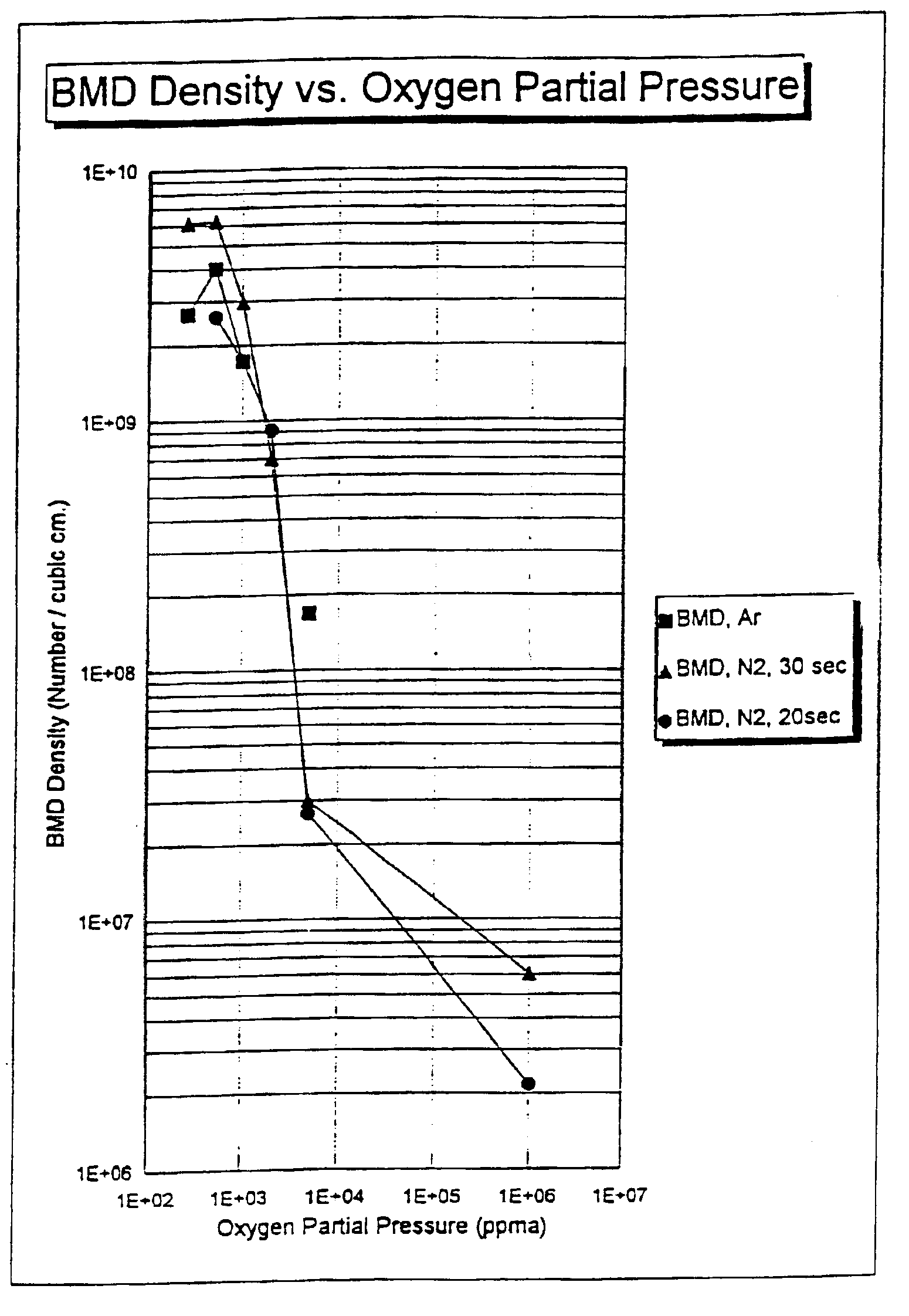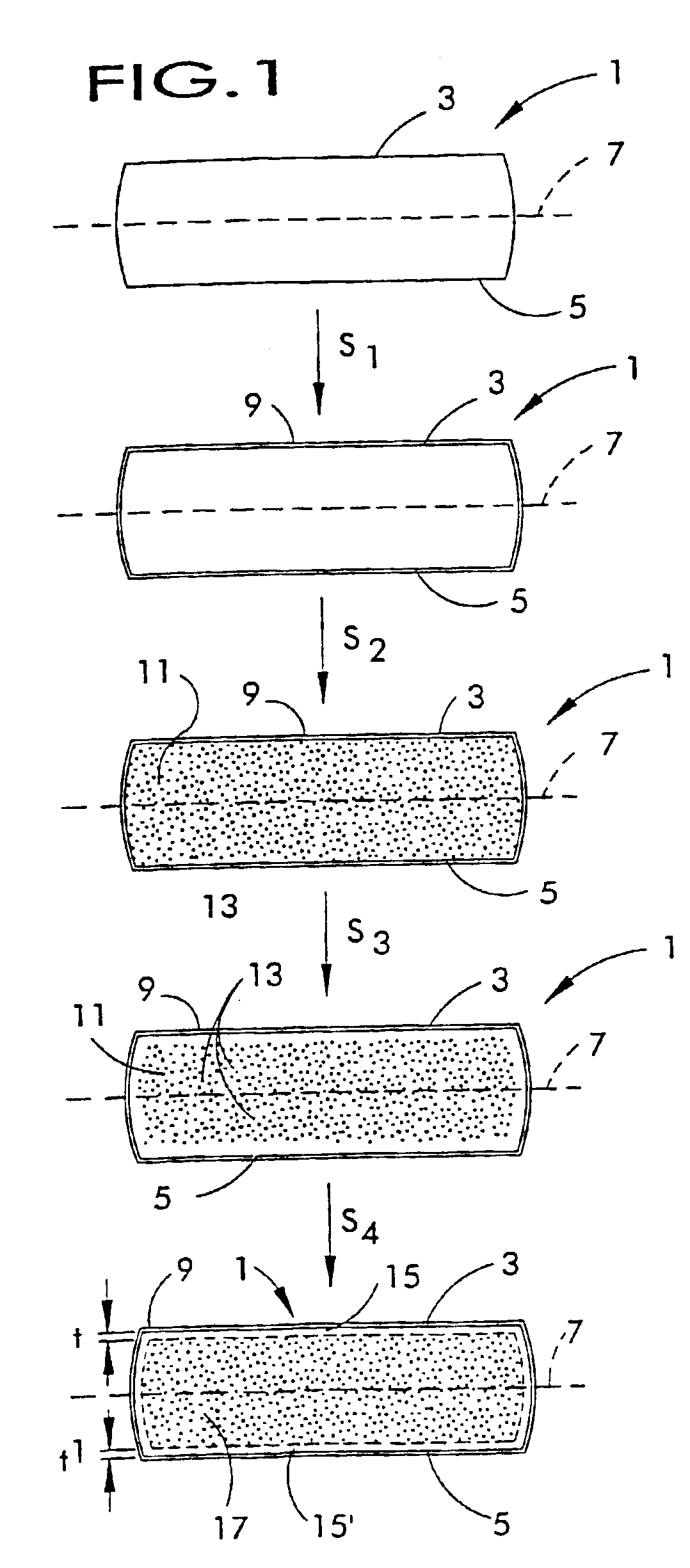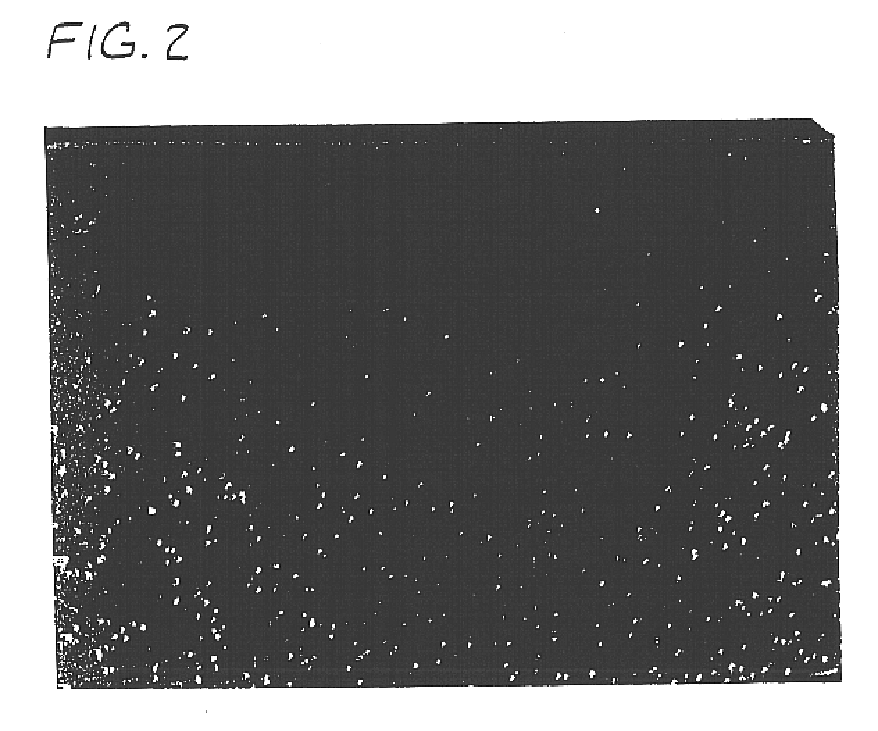Ideal oxygen precipitating silicon wafers and oxygen out-diffusion-less process therefor
a technology of silicon wafers and oxygen precipitation, which is applied in the field of silicon wafer preparation, can solve the problems of affecting the operation of the device, contaminated with various impurities, and precipitates can be harmful or beneficial,
- Summary
- Abstract
- Description
- Claims
- Application Information
AI Technical Summary
Benefits of technology
Problems solved by technology
Method used
Image
Examples
examples 1 through 4
illustrate the ideal oxygen precipitation process of the present invention. These Examples should therefore not be interpreted in a limiting sense.
example 1
Silicon single crystals were pulled by the Czochralski method, sliced and polished to form silicon wafers. These wafers were then subjected to a surface oxidation step (S1), rapid thermal annealing step in nitrogen or argon (S2), rapidly cooled (S3), and subjected to an oxygen stabilization and growth step (S4) under the conditions set forth in Table I. The initial oxygen concentration of the wafers (Oi) before steps S1-S4, the oxygen precipitate density in the bulk of the wafers after step S4 (OPD), and the depth of the denuded zone after step S4 (DZ) are also reported in Table I.
TABLE ISample4-74-83-14S115 min at15 min atnone1,000° C.1,000° C.in N2 +in N2 +˜1% O2˜1% O2S235 seconds35 seconds35 secondsat 1250° C.at 1250° C.at 1250° C.in N2in Arin N2S3100° C. / sec100° C. / sec100° C. / secS44 hr at4 hr at4 hr at800° C. +800° C. +800° C. +16 hr at16 hr at16 hr at1,000° C.1,000° C.1,000° C.in N2in N2in N2Oi7 × 10176.67 × 1017 7.2 × 1017(atoms / cm3)OPD1 × 1010 4.4 × 109 1.69 × 1010(atoms / cm3)...
example 2
To demonstrate that the process of the present invention is relatively independent of oxygen concentration for Czochralski-grown silicon wafers, three wafers having different oxygen concentrations were subjected to the same series of steps described in Example 1. The conditions for each of these steps, the initial oxygen concentration of the wafers (Oi) before steps S1-S4, the oxygen precipitate density (OPD) in the bulk of the wafers after step S4, and the depth of the denuded zone (DZ) after step S4 as measured from the surface of the wafer are reported in Table II. FIGS. 6, 7, and 8 show cross-sections of the resulting wafers (these figures are enlargements of photographs taken at a magnification of 200×); sample 3-4 is shown in FIG. 6, sample 3-5 is shown in FIG. 7, and sample 3-6 is shown in FIG. 8.
TABLE IISample3-43-53-6S115 min at15 min at15 min at1,000° C.1,000° C.1,000° C.in N2 +in N2 +in N2 +˜1% O2˜1% O2˜1% O2S235 seconds35 seconds35 secondsat 1250° C.at 1250° C.at 1250° C...
PUM
| Property | Measurement | Unit |
|---|---|---|
| distance D2 | aaaaa | aaaaa |
| temperature | aaaaa | aaaaa |
| temperature | aaaaa | aaaaa |
Abstract
Description
Claims
Application Information
 Login to View More
Login to View More - R&D
- Intellectual Property
- Life Sciences
- Materials
- Tech Scout
- Unparalleled Data Quality
- Higher Quality Content
- 60% Fewer Hallucinations
Browse by: Latest US Patents, China's latest patents, Technical Efficacy Thesaurus, Application Domain, Technology Topic, Popular Technical Reports.
© 2025 PatSnap. All rights reserved.Legal|Privacy policy|Modern Slavery Act Transparency Statement|Sitemap|About US| Contact US: help@patsnap.com



